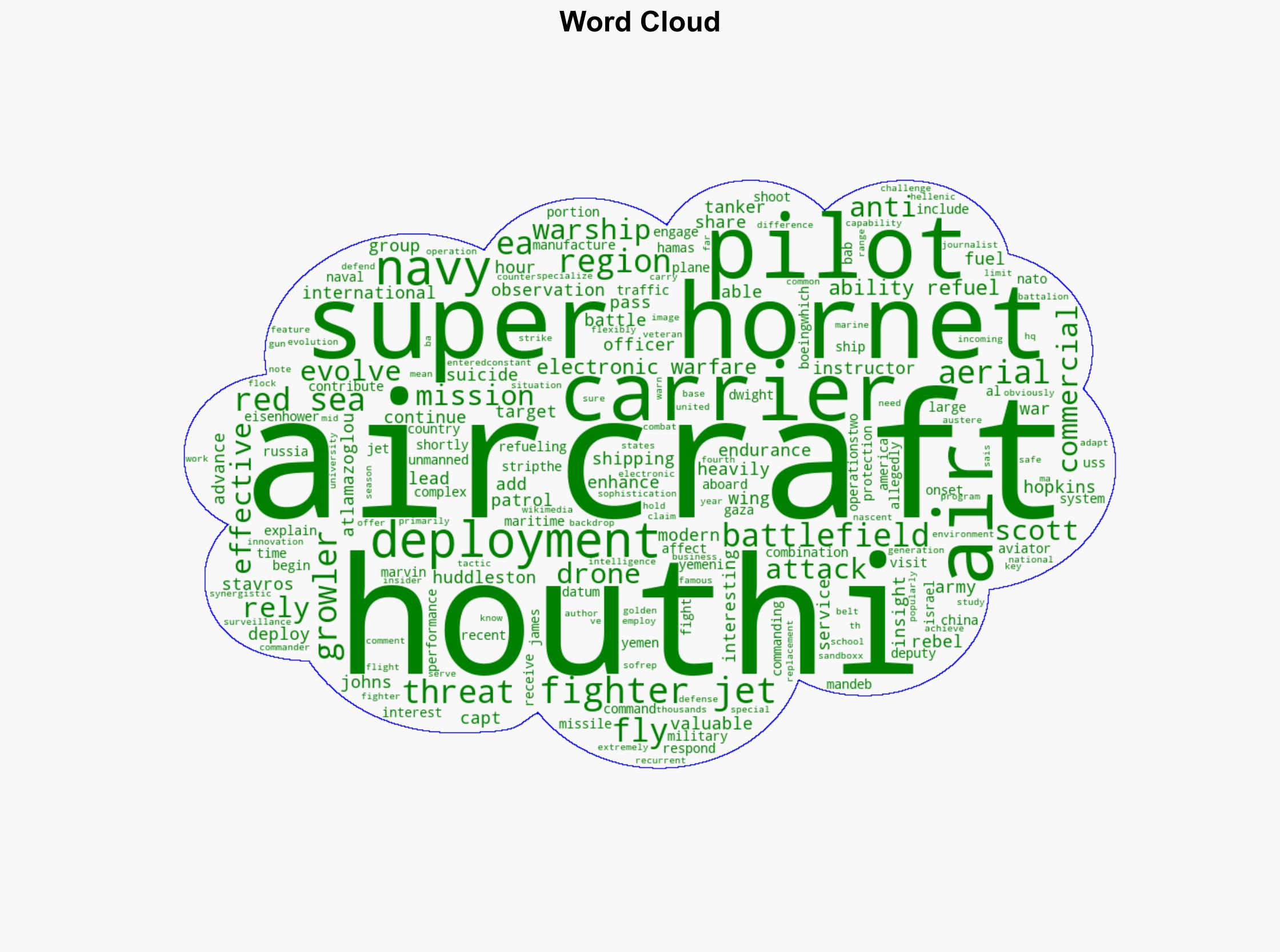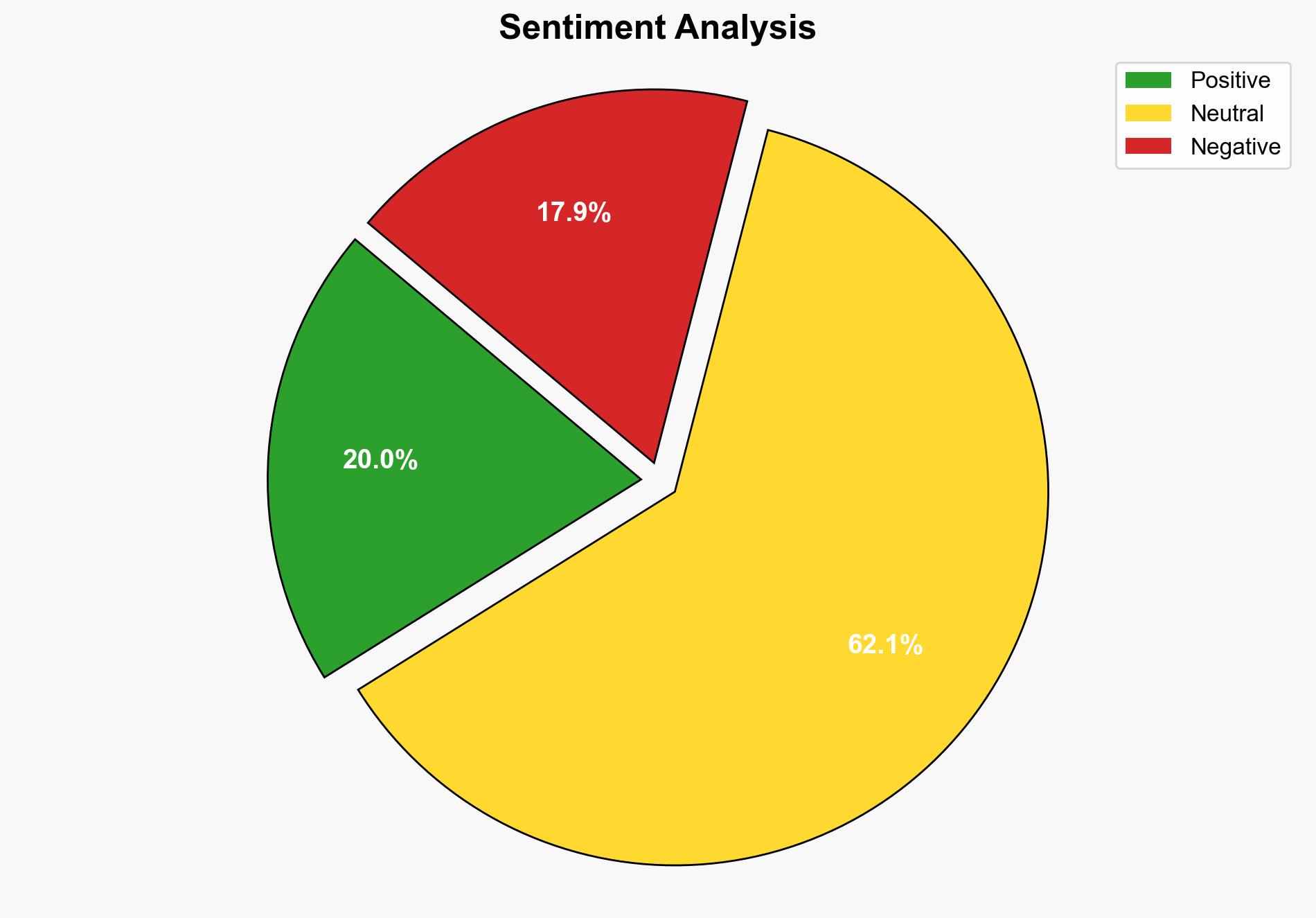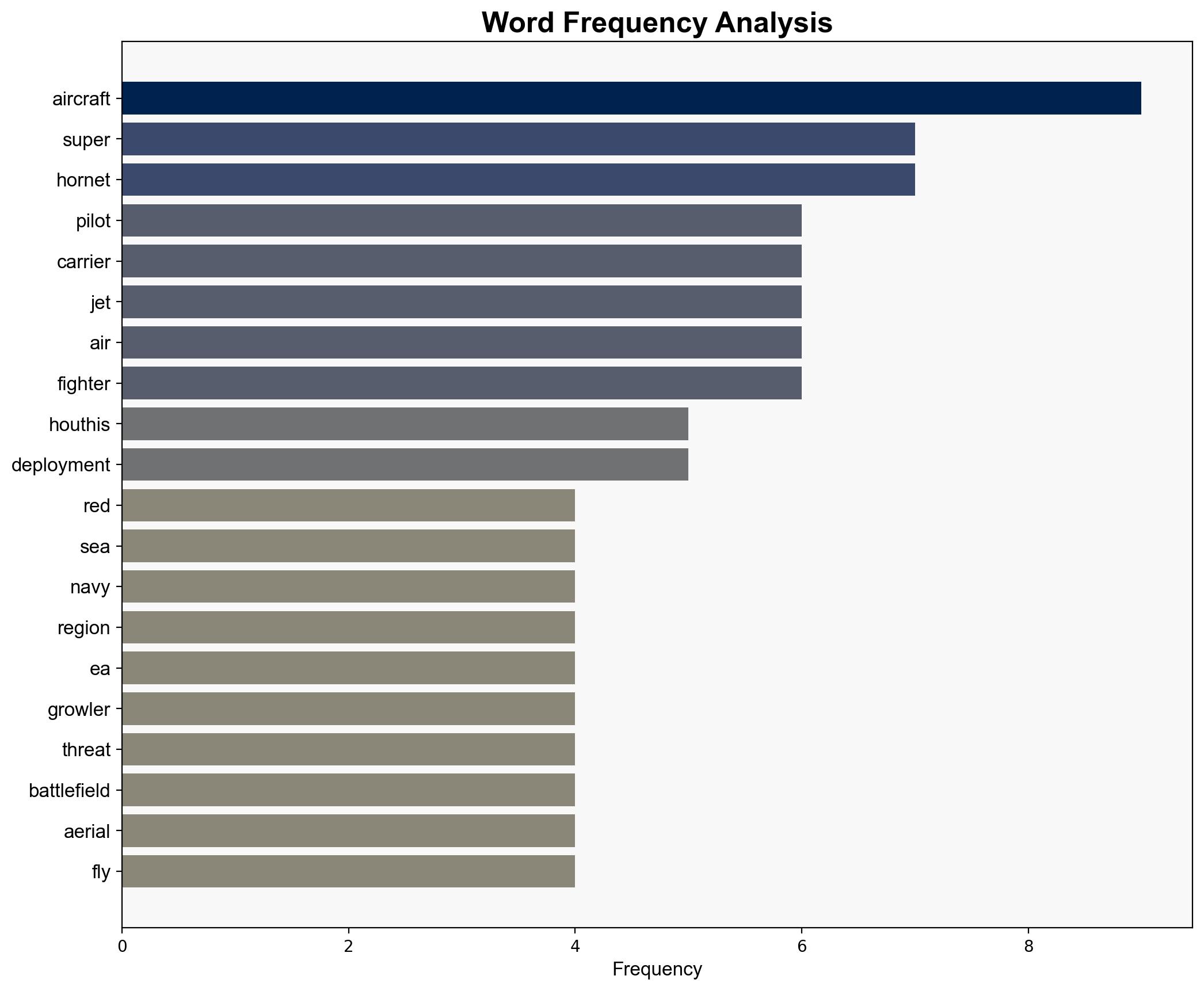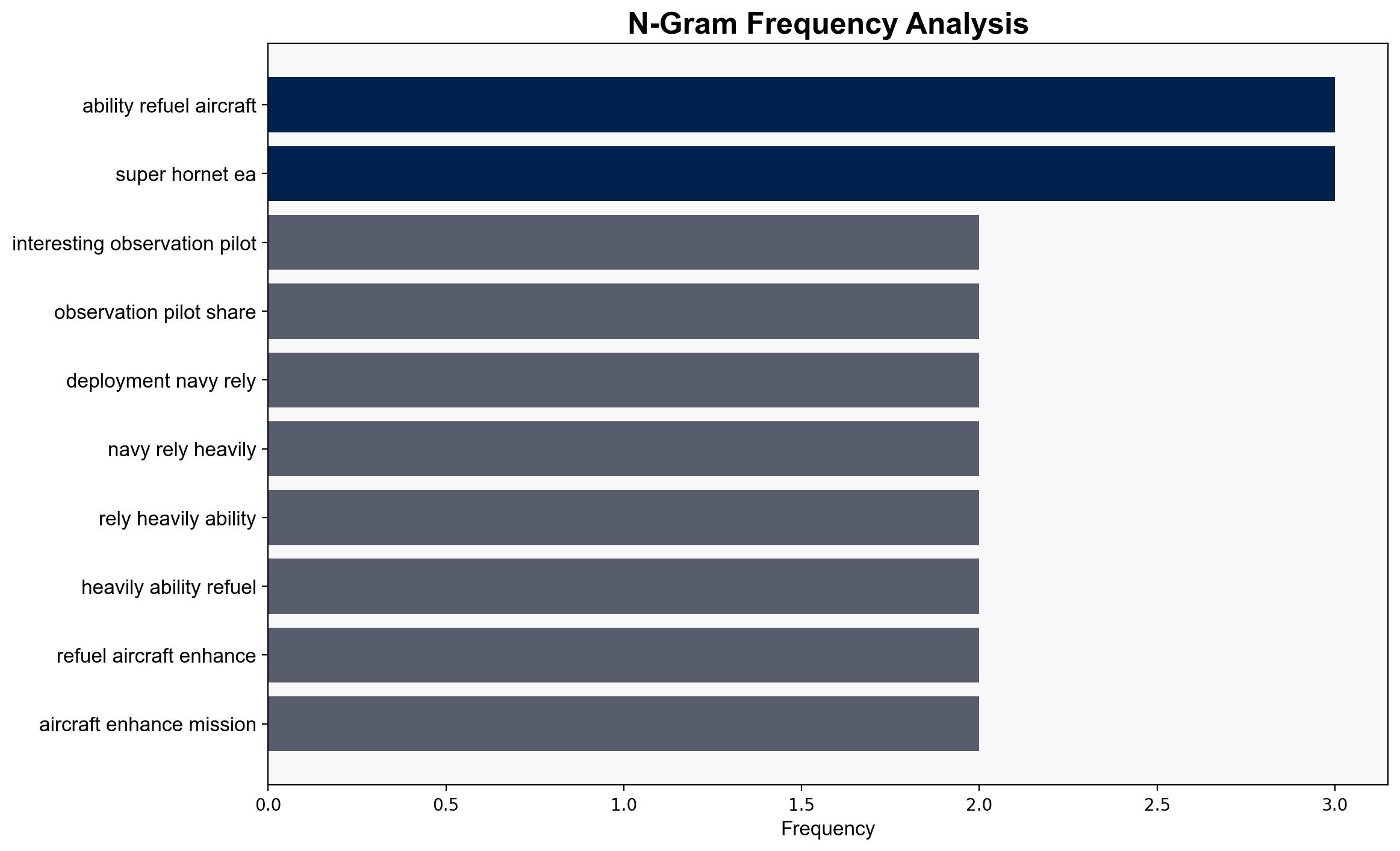Is the FA-18 Super Hornet Americas Best Plane Against the Houthis Two Pilots Explain – The National Interest
Published on: 2025-04-23
Intelligence Report: Is the FA-18 Super Hornet Americas Best Plane Against the Houthis Two Pilots Explain – The National Interest
1. BLUF (Bottom Line Up Front)
The FA-18 Super Hornet, alongside the EA-18 Growler, plays a critical role in countering Houthi threats in the Red Sea region. The aircraft’s capabilities, including aerial refueling and electronic warfare, enhance mission endurance and effectiveness. The evolving threat landscape, characterized by the use of suicide drones and anti-ship missiles, necessitates continued innovation and adaptation in aerial strategies. Strategic recommendations include enhancing electronic warfare capabilities and maintaining robust aerial refueling operations to ensure sustained operational effectiveness.
2. Detailed Analysis
The following structured analytic techniques have been applied to ensure methodological consistency:
SWOT Analysis
Strengths: Advanced electronic warfare capabilities, aerial refueling flexibility, experienced pilots.
Weaknesses: Dependence on aerial refueling infrastructure, potential vulnerability to advanced missile systems.
Opportunities: Strengthening alliances with regional partners, leveraging technological advancements in electronic warfare.
Threats: Increasing sophistication of Houthi missile and drone capabilities, potential support from external state actors.
Cross-Impact Matrix
Interdependencies between regional conflicts and international maritime security highlight the necessity for coordinated naval operations. The presence of NATO warships and U.S. carrier battle groups underscores the strategic importance of maintaining open shipping lanes.
Scenario Generation
Potential scenarios include increased Houthi aggression leading to heightened international military presence, or successful diplomatic interventions reducing conflict intensity. The role of external actors, such as Russia and China, could significantly alter the strategic landscape.
3. Implications and Strategic Risks
The evolving threat from Houthi forces poses significant risks to international shipping and regional stability. The use of advanced drones and missiles could disrupt maritime trade routes, impacting global economic interests. Additionally, the involvement of external state actors may exacerbate regional tensions, leading to broader geopolitical ramifications.
4. Recommendations and Outlook
- Enhance electronic warfare capabilities to counter sophisticated drone and missile threats.
- Strengthen aerial refueling operations to maintain sustained presence and operational readiness.
- Foster regional alliances to ensure coordinated responses to emerging threats.
- Scenario-based projections suggest that increased international cooperation could mitigate risks, while failure to adapt to evolving threats may result in escalated conflicts.
5. Key Individuals and Entities
Marvin Scott, James Huddleston, Stavros Atlamazoglou
6. Thematic Tags
(‘national security threats, cybersecurity, counter-terrorism, regional focus’, ‘cybersecurity’, ‘counter-terrorism’, ‘regional focus’)





